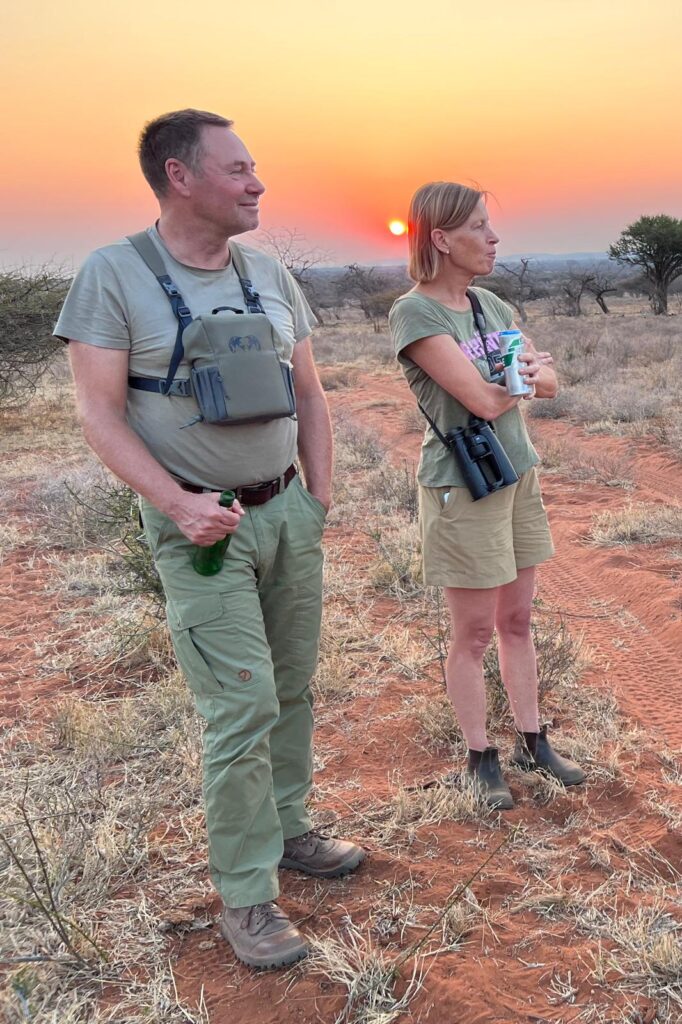
Here is what we suggest you should bring....
If this is your first safari, don’t worry, we’ve got you covered. Before diving into the details, it’s important to note that the maximum luggage allowance on light aircraft is 20kg (about 44 lbs) per person. Please avoid overpacking. Laundry services are available at request.
Photography Equipment
A safari offers countless unforgettable photo opportunities, and the right gear can make all the difference.
-
Telephoto lens: A 300mm or longer lens is highly recommended. A 100–400mm zoom offers great flexibility, while a wide-angle lens is excellent for landscapes.
-
Additional lenses: A macro lens or spare camera body can be useful, but remember the weight limit when packing.
-
Camera bag: A soft, durable backpack or a sturdy Pelican case works well. Be prepared for dust — ensure your bag provides good protection.
-
Memory cards & storage: Always bring extra memory cards. If you shoot digitally, a multimedia photo viewer or portable storage device can act as backup.
-
Lens cleaning kit: An air blower, lens cloths, and cleaning solution are highly recommended. Dust is unavoidable on safari.
-
Spare batteries & charger: Although inverters are available in safari vehicles, it’s best to carry enough batteries to last a few days.
-
Tripod: Useful for landscapes and night-sky photography.
-
Filters: A polarizer is the most versatile. UV filters help protect lenses, and neutral density filters are excellent for enhancing skies.
-
External flash: Great for reducing shadows in daylight or shooting in overcast conditions.
-
Binoculars: Essential for wildlife viewing — we recommend one pair per person.

Packing & What to Wear on Safari
Tip: Always pack your belongings in soft-sided bags. Large, hard suitcases don’t fit well on small safari aircraft and may be refused or delayed. A small piece of hand luggage is also useful for carrying essential items.
What to Wear
The key to dressing for safari is comfort and blending in with nature. Neutral colors such as khaki, green, and brown work best, helping you stay cool and avoid attracting unnecessary attention from wildlife.
-
Choose lightweight, breathable fabrics: These reduce noise, keep you comfortable in the heat, and are perfect for long days outdoors.
-
Layer your clothing: Mornings can be chilly, afternoons hot, and evenings cold — especially in winter. Layers let you adjust easily to changing temperatures.
-
Practical options: Convertible clothing like zip-off trousers or fleeces is a great space-saver. Long trousers are essential for protection against insects and brush.
-
Shirts: Long-sleeved, airy shirts with collars protect your arms and neck from the sun.
-
Pockets are your friend: Cargo trousers or multi-pocketed clothing are great for carrying essentials like sunscreen, lip balm, or spare camera batteries.
-
Sun protection clothing: Many safari clothes are designed with built-in SPF fabric — ideal for extra protection. Safari hats are also highly recommended.
What to Avoid
-
Camouflage clothing (military only).
-
Bright colors like red, pink, yellow, or orange, as they stand out too much in the bush.
Recommended Items to Bring on Safari
-
Small day backpack
-
Wide-brimmed hat for sun protection
-
Sunglasses
-
Sunscreen (SPF 30+)
-
Insect repellent
-
Torch or headlamp (with rechargeable batteries and charger)
-
Extra camera/torch batteries
-
Mammal and bird identification book (optional but useful)
-
Personal toiletries (body soap, shampoo, etc.)
-
Personal medications (if applicable)
-
Spending money (USD recommended)

